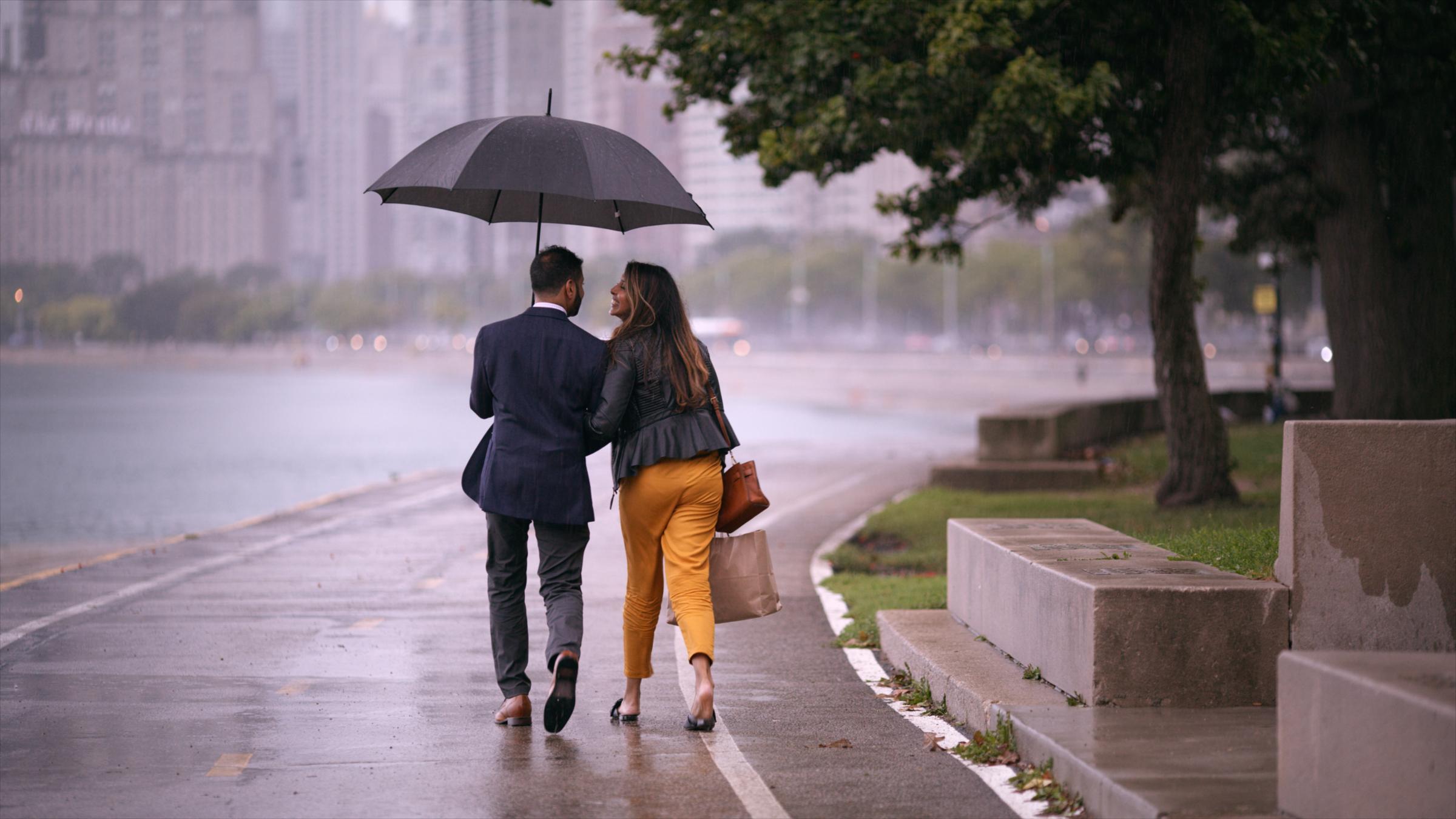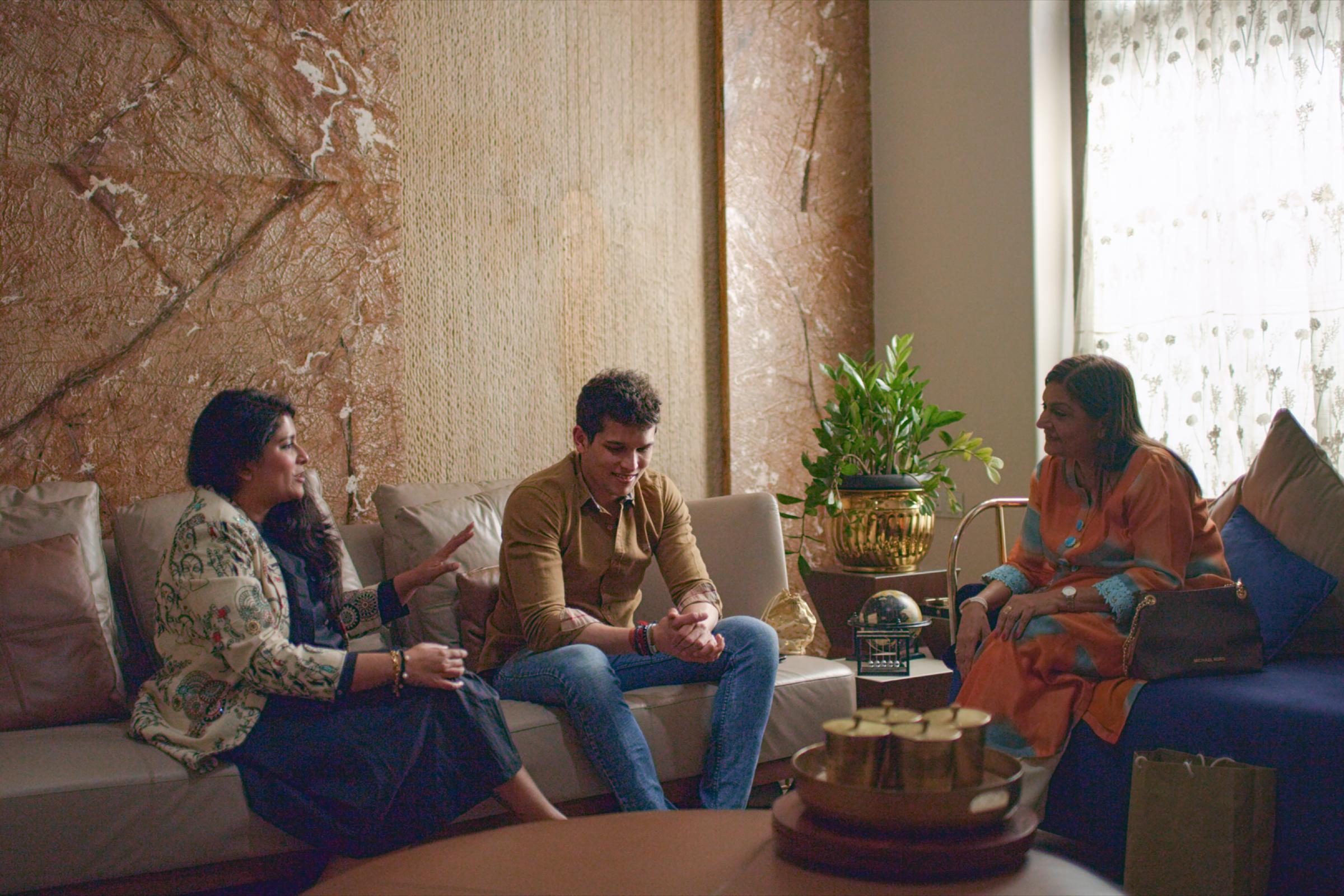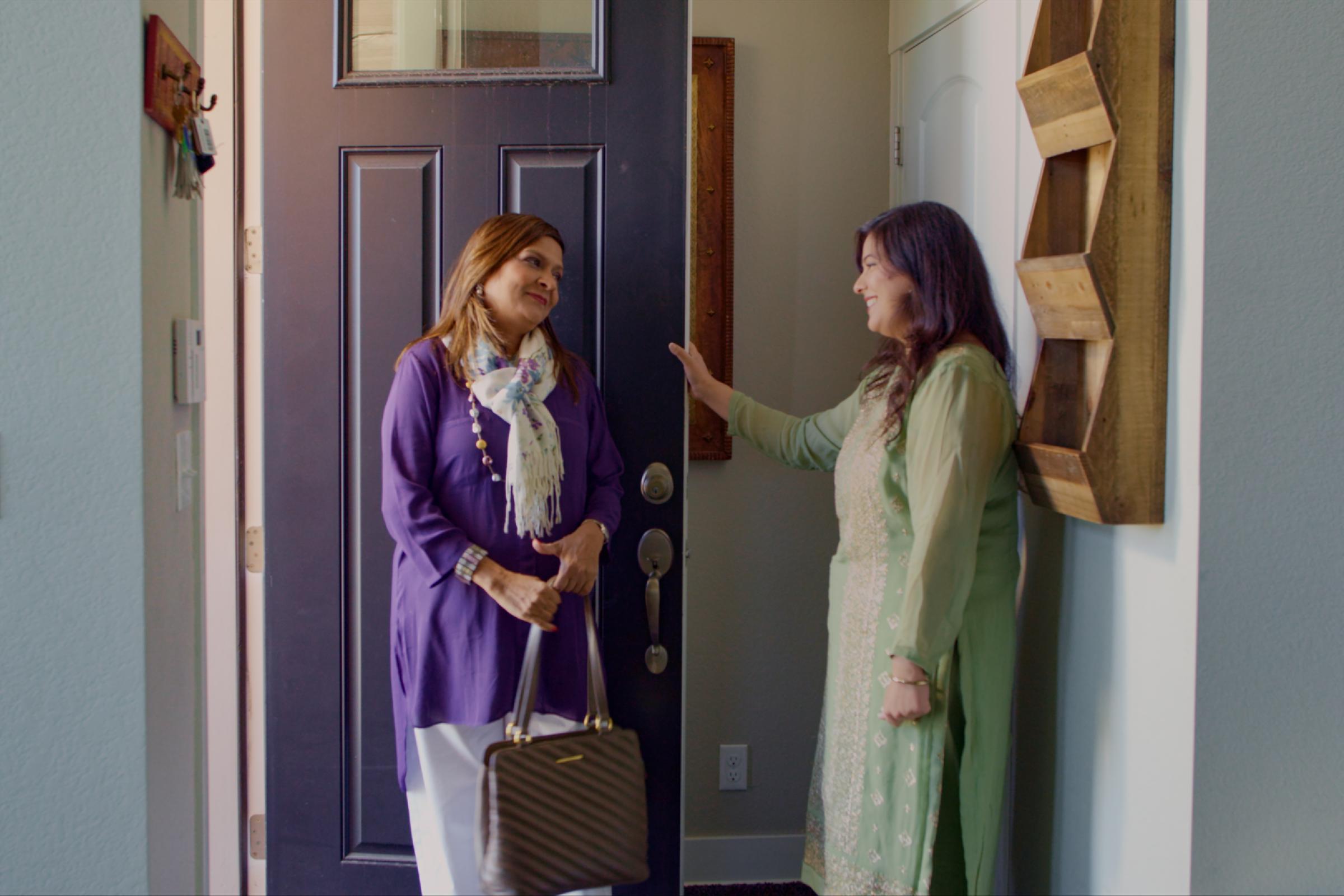“When the flight is late, we sit in the airport. We have patience and adjust, and we sit quietly,” Sima Taparia, one of Mumbai’s most highly sought-after matchmakers, tells me when we speak in mid-July. Why then, she asks, “don’t we make adjustments in our married life?” Indian Matchmaking, a new Netflix series, follows Taparia, 57, from Maharashtra, India, to Texas, New Jersey and beyond as she tries to find suitable life partners for her clients. The notion of teaching them to adjust is at the crux of her process, as she works with entire families to find the right partner for their would-be brides and grooms.
In some ways, the show is a modern take on arranged marriage, with contemporary dating horrors like ghosting and lacking the skills for a meet-up at an ax-throwing bar. But issues of casteism, colorism and sexism, which have long accompanied the practice of arranged marriage in India and the diaspora, arise throughout, giving viewers insight into more problematic aspects of Indian culture. These issues emerge in conversations with both potential matches and their parents, who make requests for their matches to have fair skin or insist that women shouldn’t spend too much time outside of the home. Taparia, who started in the industry in 2005, doesn’t see her role as matchmaker as neutral, but nor does she see it as coming with a responsibility to steer her clients away from these biases.
As an Indian-American girl growing up in Upstate New York, one part of my culture that was especially easy to brag about was weddings. They were joyful and colorful, and they looked more like a party than a stodgy ceremony. While living under the same roof in quarantine, my mom and I have had a lot of time to watch buzzy Netflix shows together. But I was hesitant to invite her to watch Indian Matchmaking with me, knowing her marriage to my dad was arranged. They’re still happily married today, but I worried: what kind of memories would the show bring up? Did she like the process?
As we watched, the show inspired conversations we’d never had before. She shared with me some details of how her skin tone affected her life when she was growing up. She was often told not to play outside as a kid, that the sun would make her skin darker and no one would want to marry her. I was saddened to hear this, but it finally made sense to me why Indian relatives and friends had made comments with similar implications to me.
Since its release in mid-July, the show has done more than inspire interpersonal conversations like these. It’s also prompted widespread debate among viewers online. And much of the feedback—especially from members of the Indian diaspora—has been negative. On social media, viewers have called out the show as “everything about indian culture [they] hate” and “a cesspool of casteism, colourism, sexism, classism.” Some argue that the show is harmful, as it may leave viewers who are not Indian or a part of the Indian diaspora with a negative perception of Indian traditions. Others say that its problems are exactly why the show is important—because it’s igniting conversations on issues that need to be addressed.
Seeking more than just class stability

Approximately 90% of all Indian marriages are arranged. About 74% of Indians between the ages of 18 and 35 prefer it that way. The tradition of arranged marriage in India has its origins in a desire to maintain caste and class. The Hindu caste system, a form of social hierarchy that many believe started with the arrival of the Aryans in India around 1500 B.C., created an obligation for people to marry within their respective groups. Upper-caste families, in particular, would look for another upper-caste family to join theirs through the marriage of their children in order to preserve their status. In Indian culture, marriage is typically considered the union of two families, rather than just two individuals. And though it used to be a process primarily led by parents, today, it’s often more of a joint effort between children and parents, both in India and across the globe.
Wealth and status are certainly still part of the equation for many (“equal to my pay or higher,” one of the show’s subjects lists as a requirement), but the millennials who are looking for love in Indian Matchmaking want more: romance, attraction, shared hobbies, emotional connection. What’s driving this shift, according to Taparia, is education and exposure to Western culture. “Twenty years before, the girls were not so much studied, and they used to agree with whatever their parents told them, but now, the girls have the full freedom to get the partner of their choice,” says the matchmaker.
But though women may have more of a choice now, we don’t exactly see “full freedom” play out on the show. “Because you’re so independent, I think you scare some of the guys away,” New Jersey-based Nadia’s mother tells her after she gets stood up. Ankita, an entrepreneur from Delhi, shares in another episode that she has been told by relatives to lose weight in order to find a partner.
Going the traditional route in the digital age

India has over 1,500 matchmaking websites, including the highly popular Shaadi.com and Bharat Matrimony. Western giants, like Tinder and Bumble, have ventured successfully into Indian markets as well. But despite all these digital matchmaking avenues at their disposal, people still choose to fly Taparia thousands of miles to help them. The subjects’ reasons for going to a traditional matchmaker in the show are wide-ranging: Akshay in Mumbai is following his mom’s orders; Aparna in Houston has struck out with nearly every other way to meet a partner; and some believe it’s the best way to meet others who are truly serious about the idea of marriage.
Another reason for going through a matchmaker, Taparia points out, is that she’s “not a broker.” Taparia does a lot of the grunt work in finding out more information about a potential match than a website can; she visits their family, sees an astrologer about horoscope compatibility (a common practice in India) and digs deep to learn their values. And she doesn’t just present clients with a list of suitable matches; she tries to nudge them in what she believes is the right direction. “If the height is one inch less, they say ‘no, no,’” Taparia says. “So I guide them, ‘You’re not marrying the height, you’re marrying the girl, you’re marrying the family.’”
The show also challenges some common misconceptions about arranged marriages. No one is being forced into marrying anyone, they all get to know the potential partners on a deeper level before committing and there are no dowries being paid. It also adds diversity to the dating show genre, which has gained a resurgence in viewership since the pandemic. Shows like Love is Blind and The Bachelor, whose March finale was its most-watched installment since 2016, have largely white participants.
A window into colorism, casteism and sexism

Indian Matchmaking also serves as a window into the colorism, casteism and sexism that are part of the Indian marriage market. And to the dismay of some viewers, many of these issues go unaddressed throughout the show. Comments about potential matches’ castes and casual colorist statements, which include prejudice or discrimination against those with dark skin tones, occur throughout the series. In the first episode, we see Taparia going through her client database, listing off the qualities in partners that people are asking for. “They want tall. They want fair. They want from a good family,” she says. In the very last episode of the season, a new client in San Diego, Richa, includes “not too dark, you know, fair-skinned,” in a list of preferences for her future partner that also include being funny, extraverted, and OK with the fact that she eats a lot of eggs.
Some argue that allowing these social attitudes to go undiscussed—alongside presenting the glamorous lives of wealthy participants in the show—could help Netflix to strengthen its market hold in India. “The things that are not politically correct in the show are left at the level of gratuitous consumption, rather than interrogating those practices at a deeper level, which could be a way for the show to appeal as something people in India would enjoy,” says Swapnil Rai, a professor of film, television and media at the University of Michigan.
These discussions come just weeks after Unilever, following years of pleas from activists and in the wake of global anti-racism protests, announced in June that the company would drop the word “Fair” from Fair & Lovely, India’s top-selling skin lightener, and discontinue using “fair/fairness,” “white/whitening,” and “light/lightening” from the brand’s messaging. (The brand is continuing to sell the same product under the name “Glow & Lovely”). Skin tone in India has long been associated with caste and wealth, and the Unilever product was commonly marketed as one that would make girls more professionally successful and that could help them find a suitable partner for marriage. Research has shown that fair skin can increase one’s chances of being chosen as a marriage partner, and Indian Matchmaking only reaffirms just how ingrained this colorist standard is even today. “Color is very important…60, 70% of the Indian population like fair skin,” the matchmaker tells TIME. She says fairness puts the potential match automatically at a 7 or 8 out of 10 in the desirability scale.
Unlike other measures, such as height, Taparia doesn’t guide her clients away from their views on skin color. The show’s executive producer, Smriti Mundhra, has said that she “didn’t want to sanitize it and shy away from the difficult conversations” in the show. But what angers viewers is not that the show depicts colorist and casteist statements, but that it normalizes them, letting them fly without criticism or comment. Viewers who aren’t engaged in the online debate about the show, much of which happens on platforms like Twitter, could have preexisting biases toward fair skin validated by the show, rather than challenged. Meanwhile, viewers who are unfamiliar with arranged marriage in Indian culture might walk away with a negative perception.
When asked about the sexism her female clients face, Taparia says things are moving in the right direction. “Nowadays, each and every girl wants to work. Nobody wants to sit idle,” says Taparia. But progress is limited: families looking for a daughter-in-law commonly tell her that the match is allowed to work for a few hours each day, but she can’t have a 9-to-5.
And the broader trend seems to contradict Taparia’s personal observations. According to a 2017 Ipsos Global Trends Survey, 64% of Indians agreed that “the role of women in society is to be good mothers and wives,” which is “in line with a broader shift towards nostalgia and tradition.”
A new kind of representation
Whether the show will go down as an insensitive misstep or an inadvertently useful, if painful, step toward dismantling outdated notions is up for debate. But one undeniable contribution: audiences are finally getting more trashy reality TV about Indians. Some of the most widely-seen moments for Indians in western pop culture and media in recent years include, to name a few, Mindy Kaling’s heartfelt teen series Never Have I Ever, the political comedy Patriot Act with Hasan Minhaj and Priyanka Chopra’s role in the FBI drama Quantico. Years before, there was Slumdog Millionaire and Bride and Prejudice. But in the genre of reality dating shows, Indians have rarely appeared on American screens.
And just like no one watches Love is Blind or The Bachelor for a nuanced picture of American culture, viewers shouldn’t watch Indian Matchmaking for a profound depiction of Indian culture. Yet without more Indians appearing in mainstream shows, the scrutiny shows like Indian Matchmaking face is inevitable. For Taparia, the work never ceases, on camera or off. Whether or not the show helps to challenge old ways or further reinforces them, her services remain in high demand. “Now, I’m talking to you, but in my mind, a match is going on,” Taparia tells me, making me acutely aware of the fact that she was analyzing me throughout our entire conversation. “It is a 25-hours job.”
More Must-Reads from TIME
- Cybersecurity Experts Are Sounding the Alarm on DOGE
- Meet the 2025 Women of the Year
- The Harsh Truth About Disability Inclusion
- Why Do More Young Adults Have Cancer?
- Colman Domingo Leads With Radical Love
- How to Get Better at Doing Things Alone
- Michelle Zauner Stares Down the Darkness
Write to Anna Purna Kambhampaty at Anna.kambhampaty@time.com